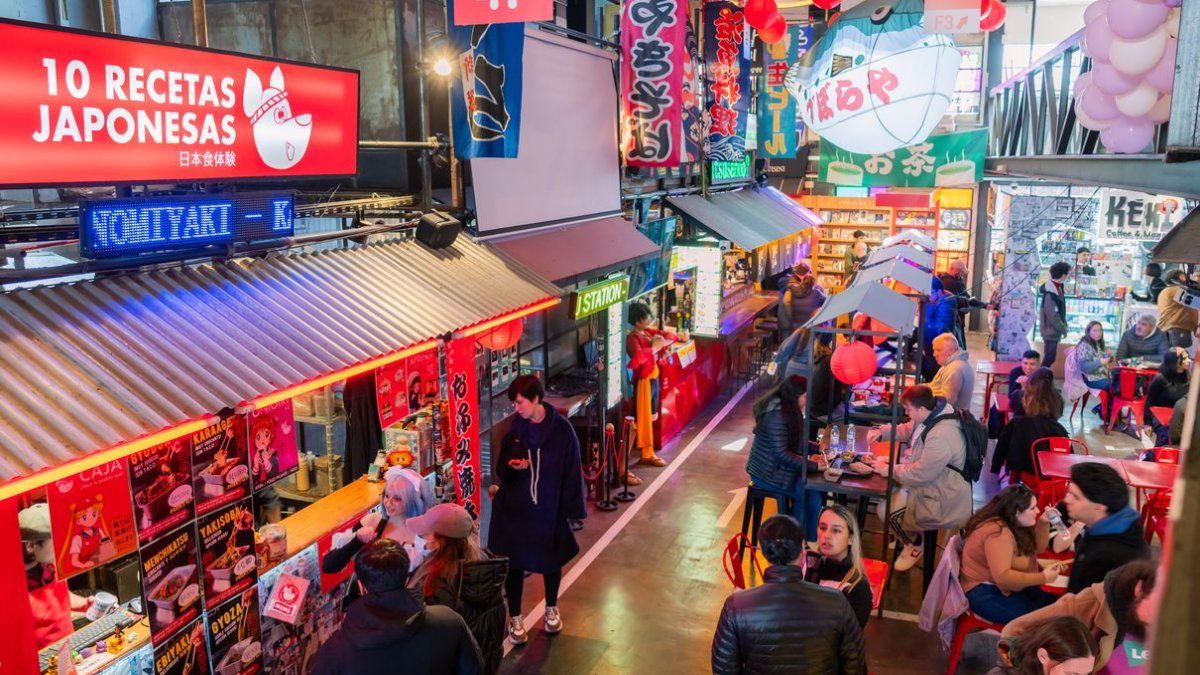Hang a desire in a colored paper strip, tie it to a bamboo branch and let the wind take it to the universe. That scene, which seems taken from a Japanese film, becomes more and more frequently in different cities in the world. And now also in Argentina. It is about Tanabata Matsuri – That has its own emoji-, the Japanese wishes festival, which will be held this weekend of July 12 and 13 in Mercat Villa Crespo (Thames 747), one of the most vibrant gastronomic and cultural poles in the city.
In Rosario, more than 2,000 people already participated in their first local edition, organized in the municipal astronomical complex, with a great accompaniment of the community and regional media.
Although many discover it for the first time, Tanabata is not a passing fad. He has more than 1,300 years of history in Asia and its recent expansion is linked to the growing global interest in Japanese culture, Kawaii aesthetics, anime and rituals that connect with the emotional.
From Chinese legend to global phenomenon: the story behind Tanabata
Tanabata () literally means “the night of the seventh” and has its origin in an ancient Chinese legend, which was adopted by Japan during the seventh century. Tell the story of Orihime and Hikoboshitwo heavenly lovers who, punished for neglecting their duties, were separated by the Milky Way and can only meet once a year: the seventh day of the seventh month.
That day, people write their desires in paper strips called Tanzaku and hang them from bamboo branches, decorating streets, temples and squares. Tradition is replicated with variations in other Asian countries: in South Korea it is called Chilseok and in China it is the qixi jie, where the legend is original.
“The fascination with Japanese rituals is growing throughout the world, especially among the new generations. In part because of the impact of the encouragement and partly because of the desire to re -connect with the symbolic and the community,” explains Keika Furukawa, director of the Cultural and Informative Center of the Japan Embassy in Argentina.
Mercat Villa Crespo: A corner of Asia in Buenos Aires
During the weekend of July 12 and 13, the Mercat Asian alley It becomes a real Japanese party, with live shows, thematic gastronomy and hundreds of Tanzaku available for the public to leave their desire.
“The goal is to bring a piece of Japan to the heart of Buenos Aires and that anyone can participate, regardless of whether or not to know the story. It is a festival for the whole family, where the symbolic is crossed with the sensory,” says Sergio Asato, curator and producer of Mercat and a reference of Asian culture in Argentina.
“Tanabata is a perfect opportunity to approach an ancient culture in a friendly, fun and participatory way. It is spiritual, but not religious. Ritual, but not solemn. It is writing a desire and feeling that it can be fulfilled,” Asato adds.
Outstanding agenda in Mercat Villa Crespo
Saturday July 12-Tanabata J-Rock, Japanese dance and pop
- 16.00 H – Nushu Danza & Lili Hanfu: Traditional Chinese dance exhibition with Hanfu clothing.
- 17.00 h-Mumei side: J-Pop band and j-rock live.
- 18.00 h – Kiseki: Japanese music band inspired by anime and video games.
- 19.30 h – Kamikaze duo: Rock fusion show with samurai cumbia and culture influences.
- 20.30 H – DJ Ryuji: Closing of Contemporary DJ set by contemporary Japanese music by Matías Asato.
Sunday July 13 – Tanabata Traditional
- 15.00 h – Japanese song: live gender karaoke inka with live saxophone.
- 15.30 h – Fernando Niizawa – Ikigai Philosophy: open talk about the book “Ikigai”, Japanese vital purpose philosophy.
- 16.00 h – Claudia Nishida: Traditional Japanese songs in Karaoke format.
- 5:00 p.m.
- 18.00 h – Mukaito Taiko: Japanese drum show.
- 19.00 H – Sarmiento Taiko: Matsuri dance closure and traditional Japanese percussion
The entrance is free and free, and the event is part of the BA gastronomic capital agenda.
Source: Ambito
I am an author and journalist who has worked in the entertainment industry for over a decade. I currently work as a news editor at a major news website, and my focus is on covering the latest trends in entertainment. I also write occasional pieces for other outlets, and have authored two books about the entertainment industry.




